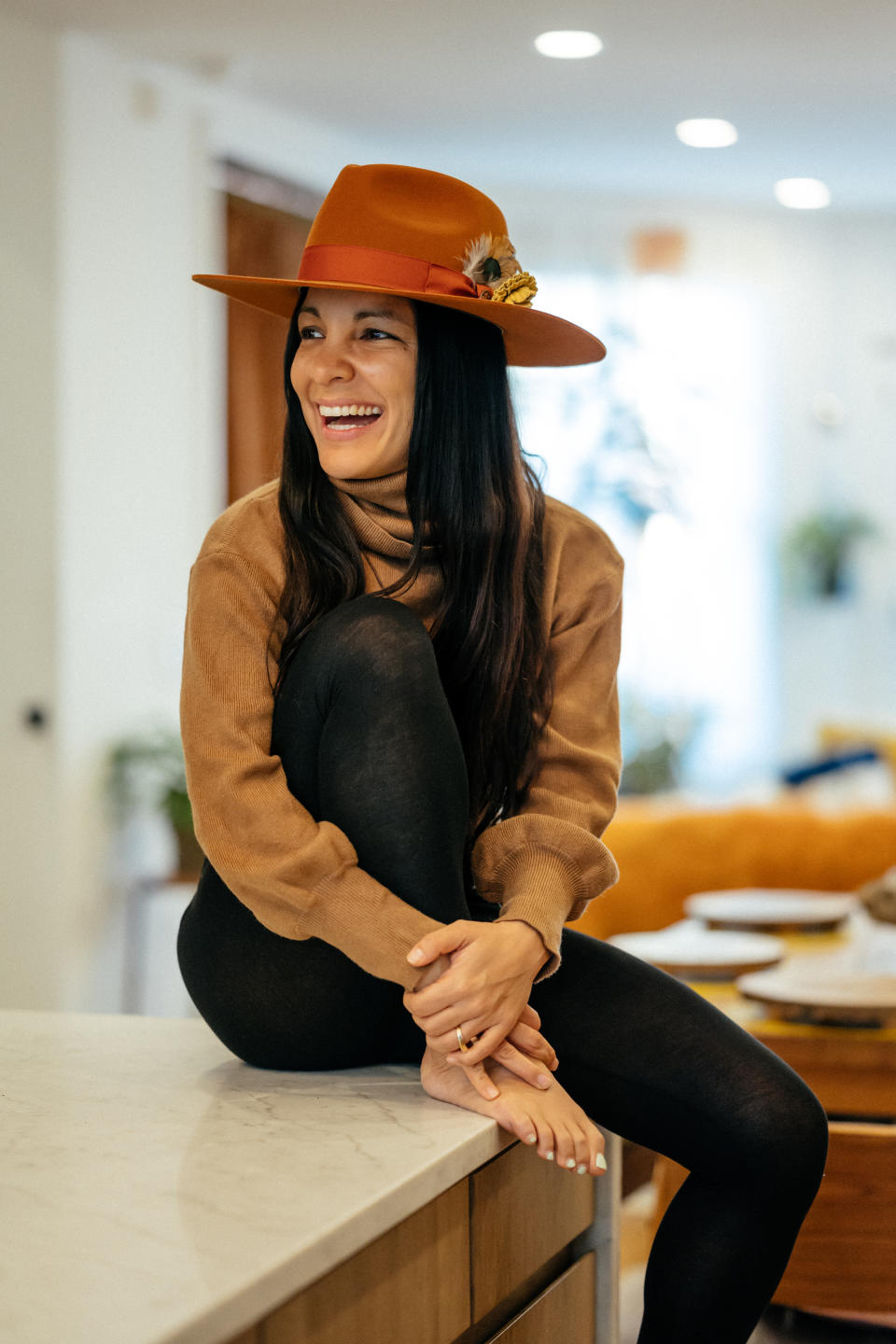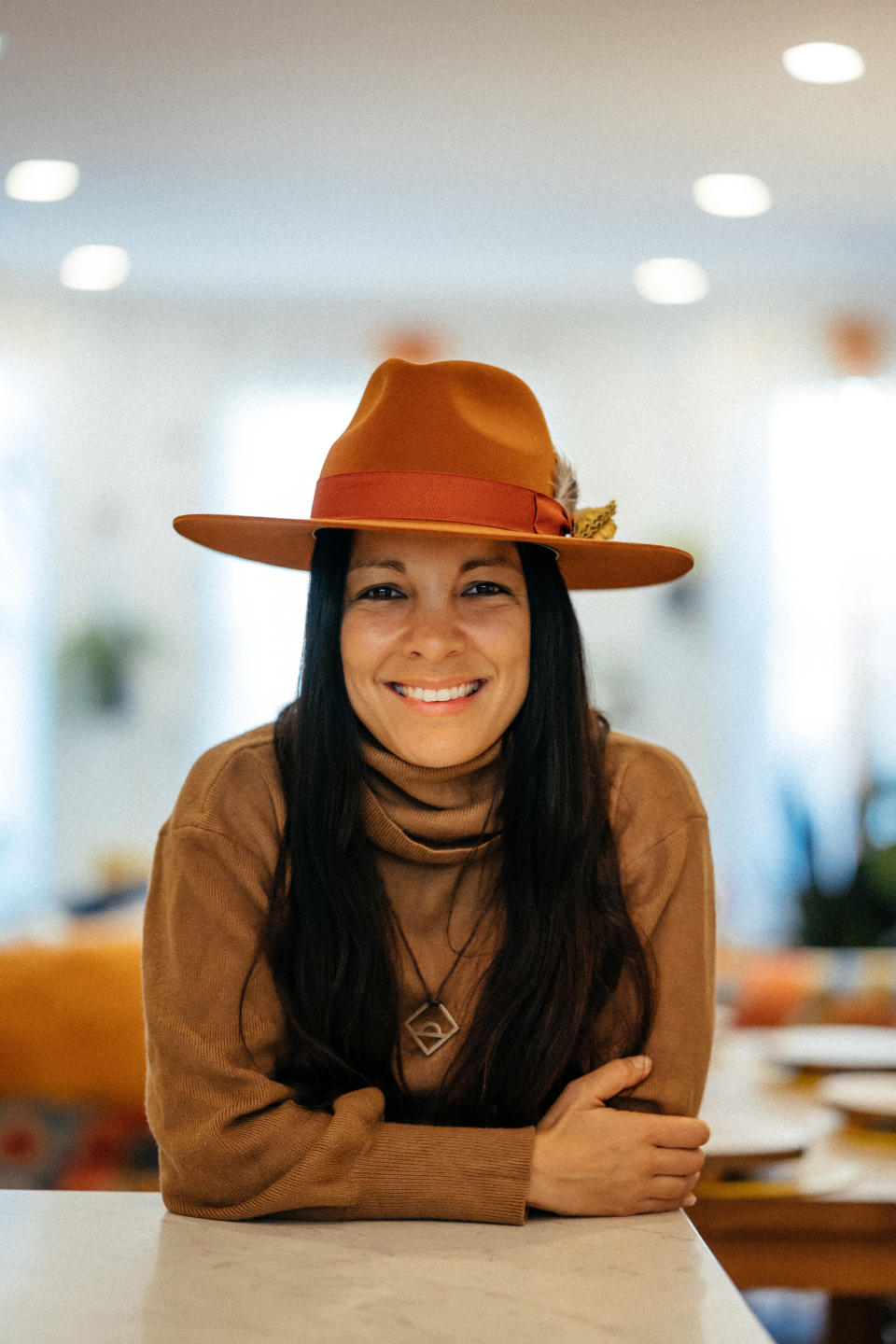How this entrepreneur turned heartbreak into a morning dance party movement
We are all works in progress; even the successful women you see owning it on Instagram faced stumbling blocks along the way and continue to work hard to stay at the top of their game. In this series, we're sitting down with the people that inspire us to find out: How'd they do it? And what is success really like? This is "Getting There."
Radha Agrawal is the definition of a serial entrepreneur: She was one of the co-founders of Thinx, the company behind "period-proof" underwear, she's the CEO and co-founder of Daybreaker, the sober morning rave series that's attracted a community of over 500,000 members, and now she's co-founded a new venture called LiveItUp, an online education resource with courses on everything from nutrition to parenthood to fitness.
Plus, did we mention she's currently touring with Oprah Winfrey's 2020 Vision Tour? We sat down with the author and community activist to find out just how she got here.
TMRW: Has your idea and mission always been the same? Or did it evolve over time?
Agrawal: Before the very first Daybreaker event, we had identified our five core values: Wellness, camaraderie, self-expression, mindfulness and mischief.
These values are the lens through which we look at all of our partnerships, our media conversations, our food and beverage that we bring to the events, the music, the performance, everything. The five core values are critical and they have stayed the same for the last seven years.
TMRW: How did you land on those?
Agrawal: It's something that we were craving for ourselves. It's such a gray area thing — it's a very moving, living, breathing organism, a community — so to define it would feel weird, at first, but it's actually critical.

TMRW: What was the first Daybreaker experience like? Were you nervous or intimidated at all?
Agrawal: For the very first one, I invited 300 friends and 180 showed up.
It's always scary to try something and then if no one shows up, to have your tail between your legs, like, "All right, well, 10 people came." But that's part of the courage of creating a community in the first place. It's such a tender thing. That's why I always tell people who want to create community, that it's a courageous and tender experience.
And if only 10 people show up, great. Then if each person next time brings two of their friends, I have 30 people the next time. As long as you're patient, courageous and intentional, then you'll continue on your path of building your community.
We have spent zero dollars on marketing in seven years. It's all what I call whisper sharing. When you build a community with deep intention, you walk in there and you're bowled over with the level of warmth ... I get messages from people nonstop who are so grateful for it.
It's also the most rewarding part of my life, so much more rewarding than any other entrepreneurial project I've ever taken on, because it's so human and it's so healing.
Dance is the most healing modality that exists on the planet. And yet we continue to think of it as a party. We don't often think of dance as an antidote or as a remedy for your depression, for your isolation, or your anxiety or your sadness or your loneliness.
TMRW: Was there ever a point when you realized: Oh, yeah, this could be my next big thing.
Agrawal: I was doing Daybreaker part-time for a year and a half, maybe even two years, because I was running another start-up. And in that start-up, I had a hostile takeover. I had my investors, after five years of running my start-up, pull the rug from under me and push me out of my own company with nothing, really. It was a children's business I had run for five years.
Daybreaker was initially just a part-time thing, but when that happened to me, I just needed something to put my energy into to recover from the absolute shattered heart that I had from what felt like having my firstborn baby taken from me.
So I poured all of my energy and all of that angst into building and growing Daybreaker. We took it from four cities to 15 cities in a year and now we're in 28 cities, seven years in.
For more like this, follow TMRW on Instagram at @tmrwxtoday.
TMRW: That has to be, like you said, heartbreaking. How do you work through experiences like that or challenges you face when it comes to running this business?
Agrawal: The first thing is to surround yourself with people who root for you and love you and who really want the best for you — who don't secretly want you to fail.
Those are the friends who will show up for you in your time of need, and they did for me, fortunately. Those were the friends who came to the very first Daybreaker. They're the ones who bought into our Kickstarter for Thinx. I always say that all my success is a result of this community lifting me up and lifting us up.

Step two is to know when to leave. For me, it was time to go. I could have fought, there were a lot of things that I could have done, but I have so many more ideas. I have so many more eggs of ideas inside the uterus of my "idea factory" that I'm going to birth a million more amazing projects.
When it first happened, I was angry. I processed all this feeling, but then honestly it turned to gratitude, and I'm so grateful to those investors for taking it from me because I needed to focus on Daybreaker for a while. I needed to build this movement for a while.
TMRW: How do you strike a balance for yourself between being successful financially and living your mission?
Agrawal: There is a world in which you're taking a job that pays the bills, but then having the courage and the tenacity to build your passion on the side. The problem is, most people can't do both. When you come home from the office, you're depleted, you're exhausted.
I did that. I was an investment banker and on the side we were building out a business plan for our restaurant, my first restaurant in New York City. Daybreaker was built on the side — I did that after hours. Everything was always on the side and then turned into the thing, but I had the tenacity to do it.

I just think that people have to stop scrolling on their Instagram. Literally you can win back 50 hours a month if you didn't scroll on Instagram, right? In those 50 hours that you're spending mindlessly numbing, looking and liking, you could be innovating and creating and taking meetings and building.
You just have to have that can-do mentality. It starts with mindset. It starts with discipline. And then you do anything you want.
This interview has been edited and condensed for clarity.

